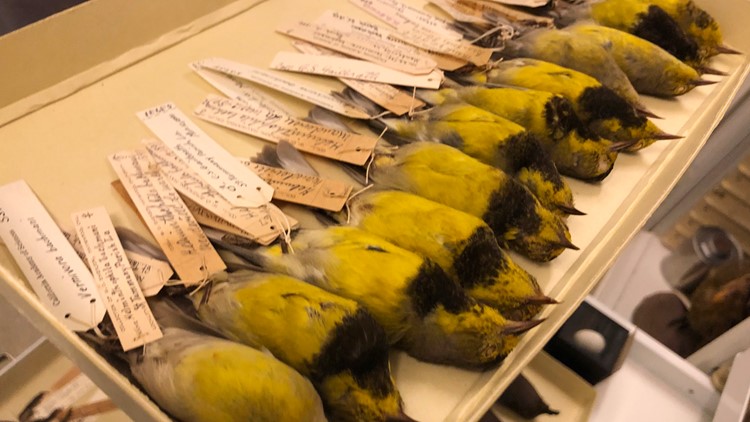ST. PETERSBURG, Fla. — A small yellow and black songbird – the Bachman's warbler – that once bred in swampy thickets in Florida and other nearby states has officially been marked as likely extinct.
The U.S. Fish and Wildlife Service finalized a rule on Monday removing a total of 21 species from the threatened and endangered species list because of extinction, a news release from the Center for Biological Diversity explains.
Other than Bachman's warbler, the other now-extinct species include:
- Eight of Hawaiʻi’s honeycreepers
- Bridled white-eye of Guam
- Mariana fruit bat of Guam
- A Texas fish
- Nine southeastern mussels
They all now join the list of 650 U.S. species that have likely been lost to extinction, according to the nonprofit.
“My heart breaks over the loss of these 21 species,” said Noah Greenwald, endangered species director at the Center for Biological Diversity, in a statement. “These plants and animals can never be brought back.
"We absolutely must do everything we can to avert the loss of even more threads in our web of life.”
Bachman's warbler could be found in Florida, Alabama, Georgia, North Carolina, South Carolina and Tennessee. They used to spend the winter in Cuba, where the bird was allegedly seen for the last time in 1962.
According to the Florida Fish and Wildlife Conservation Commission, the last confirmed sighting of a nest was in 1937.
Leaders with the Center for Biological Diversity explain the bird was lost to habitat destruction and collection.
“Few people realize the extent to which the crises of extinction and climate change are deeply intertwined,” Greenwald said in the statement. “Both threaten to undo our very way of life, leaving our children with a considerably poorer planet.
"One silver lining to this sad situation is that protecting and restoring forests, grasslands and other natural habitats will help address both.”
To read more about the other extinct species, click here.



